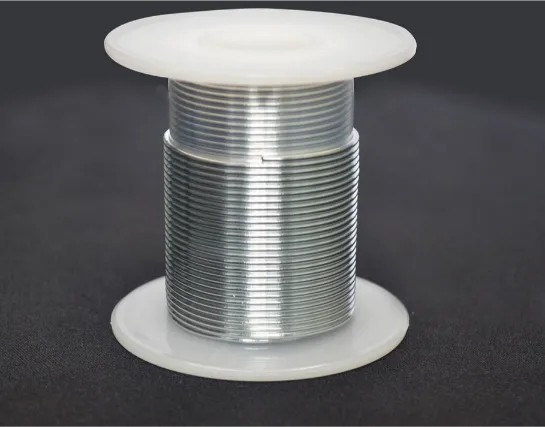Indium, a post-transition metal known for its malleability and low melting point, is utilized extensively in various industries, particularly electronics, due to its excellent wetting ability and low toxicity compared to traditional solders like lead. Aluminum, recognized for its lightweight properties, corrosion resistance, and good electrical conductivity, is widely employed in aerospace, automotive, and consumer…
Indium Foil is a specialized material derived from indium, a post-transition metal known for its unique physical and chemical properties, including excellent electrical conductivity, malleability, and a low melting point. Discovered in 1863, indium has become increasingly significant in various industrial applications, particularly in electronics, renewable energy, and medical technologies. Indium foil plays a crucial…
Soldering with indium has garnered attention due to the unique properties of indium, a post-transition metal known for its low melting point, ductility, and excellent wetting ability. These characteristics make indium an increasingly favored choice for soldering in various industries, particularly electronics and medical devices, where preserving the integrity of heat-sensitive components is crucial. The…
Indium solder is a specialized alloy that provides numerous advantages in various industrial applications, particularly in the electronics sector. Notably, it is a lead-free alternative that aligns with modern environmental standards, catering to the growing demand for sustainable manufacturing practices. Its unique properties, including a low melting point, excellent wetting ability, and exceptional ductility, make…
Tin is a silvery white metal that is soft when first cut, but quickly tarnishes to a dull gray color when exposed to air. Tin is highly malleable and can be easily shaped without breaking. It is also very ductile, meaning it can be drawn into thin wires. Tin is one of the few metals that can be found in its native form, meaning it does not need to be extracted from the ore. This is because tin is relatively low on the reactivity scale, and therefore does not readily form compounds with other elements. Tin was used by humans as early as the Bronze Age, and has been an important metal in human history ever since. Tin can be used in a…
Indium solder foil, a versatile material with a low melting point and excellent electrical conductivity, finds applications in a wide range of industries. Its unique properties make it particularly suitable for use in electronics, particularly in the assembly of high-performance devices. One of the key advantages of indium solder foil is its ability to form strong,…
Indium (In) has a relatively low melting point (157°C) and can form a series of low-melting-point eutectic solders with elements such as Sn (tin), Pb (lead), and Ag (silver). This helps avoid the impact of high temperatures on products during packaging and soldering processes. Indium-based solders have high corrosion resistance in alkaline media and excellent…
Indium foil is a specialized material primarily used in the aerospace and electronics industries to create highly effective hermetic seals at low temperatures. Renowned for its unique physical and chemical properties, indium foil excels in maintaining a pliable and durable bond even under extreme conditions, making it essential in applications such as RF and microwave…
The Importance of High-Performance Solutions When it comes to optimizing your computer’s cooling system, thermal conductivity is a crucial factor. For those seeking the highest performance, Conductonaut offers an exceptional solution. This thermal compound is renowned for its extremely high thermal conductivity, making it ideal for demanding configurations where efficient heat dissipation is key. Whether…
When it comes to thermal management in electronic devices, using the right thermal interface material (TIM) is crucial to ensure optimal performance and reliability. One metal-based TIM that has gained popularity in recent years is indium foil. In this article, we will explore the unique properties and benefits of using indium foil as a TIM…









